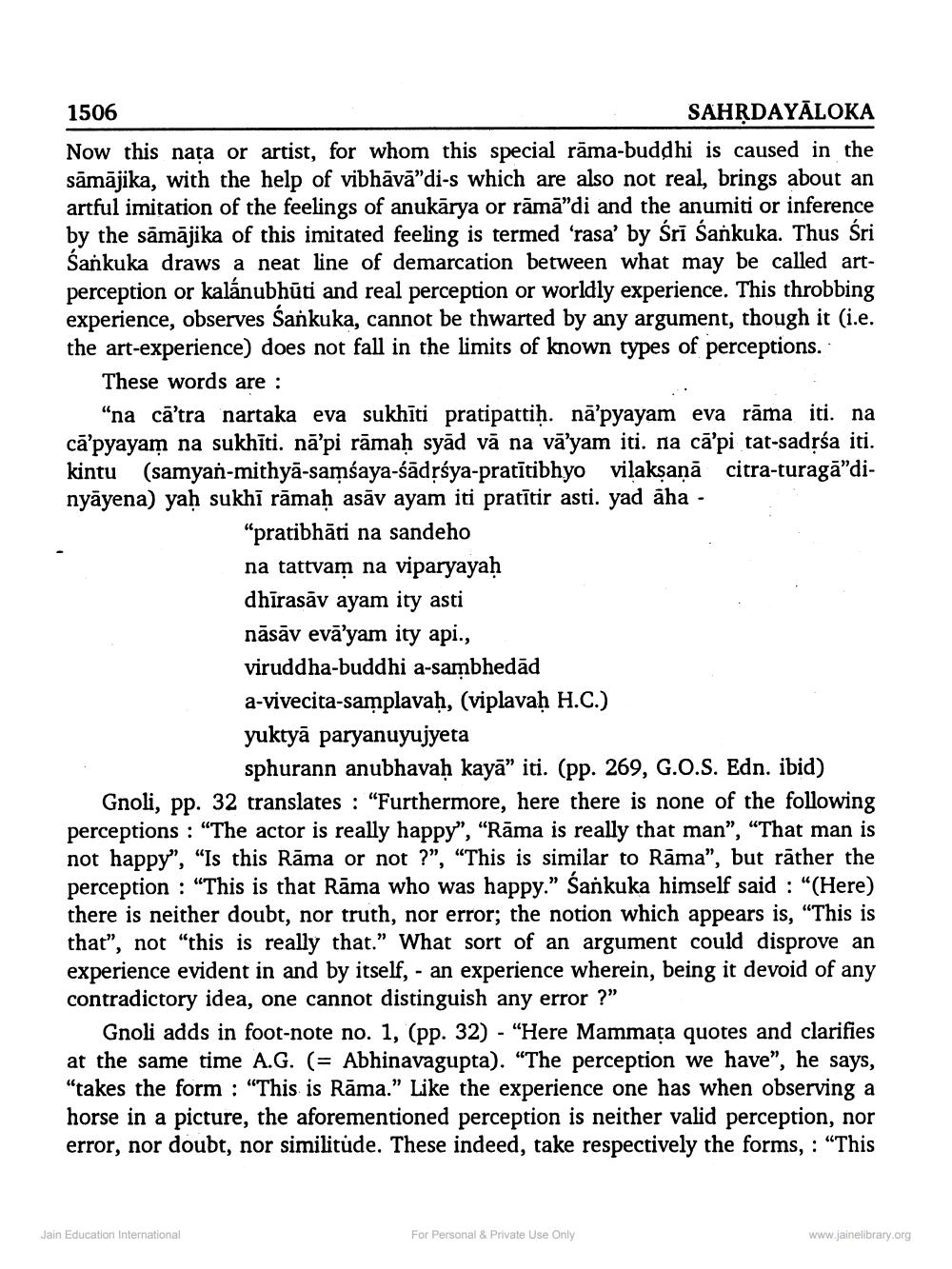________________
1506
SAHRDAYĀLOKA Now this nata or artist, for whom this special rama-buddhi is caused in the sāmājika, with the help of vibhāvā"di-s which are also not real, brings about an artful imitation of the feelings of anukārya or rāmā"di and the anumiti or inference by the sămājika of this imitated feeling is termed 'rasa' by Śrī Sankuka. Thus Śri Sankuka draws a neat line of demarcation between what may be called artperception or kalánubhūti and real perception or worldly experience. This throbbing experience, observes Sankuka, cannot be thwarted by any argument, though it (i.e. the art-experience) does not fall in the limits of known types of perceptions.
These words are :
“na cā’tra nartaka eva sukhīti pratipattiḥ. nā’pyayam eva rāma iti. na cā’pyayam na sukhīti. nā’pi rāmah syād vā na vā’yam iti. na cā’pi tat-sadrśa iti. kintu (samyan-mithyā-samsaya-śādrśya-pratītibhyo vilaksaņā citra-turagā"dinyāyena) yah sukhi rāmaḥ asāv ayam iti pratītir asti. yad äha -
“pratibhāti na sandeho na tattvam na viparyayaḥ dhīrasāv ayam ity asti nāsāv evā’yam ity api., viruddha-buddhi a-sambhedad a-vivecita-samplavaḥ, (viplavaḥ H.C.) yuktyā paryanuyujyeta
sphurann anubhavaḥ kayā” iti. (pp. 269, G.O.S. Edn. ibid) Gnoli, pp. 32 translates : “Furthermore, here there is none of the following perceptions : "The actor is really happy", "Rāma is really that man”, “That man is not happy", "Is this Rāma or not ?", "This is similar to Rāma", but rather the perception : "This is that Rama who was happy.” Sankuka himself said : “(Here) there is neither doubt, nor truth, nor error; the notion which appears is, "This is that”, not "this is really that." What sort of an argument could disprove an experience evident in and by itself, - an experience wherein, being it devoid of any contradictory idea, one cannot distinguish any error ?”
Gnoli adds in foot-note no. 1, (pp. 32) - "Here Mammaţa quotes and clarifies at the same time A.G. (= Abhinavagupta). “The perception we have", he says, "takes the form : “This is Rāma." Like the experience one has when observing a horse in a picture, the aforementioned perception is neither valid perception, nor error, nor doubt, nor similitude. These indeed, take respectively the forms,: "This
Jain Education International
For Personal & Private Use Only
www.jainelibrary.org




